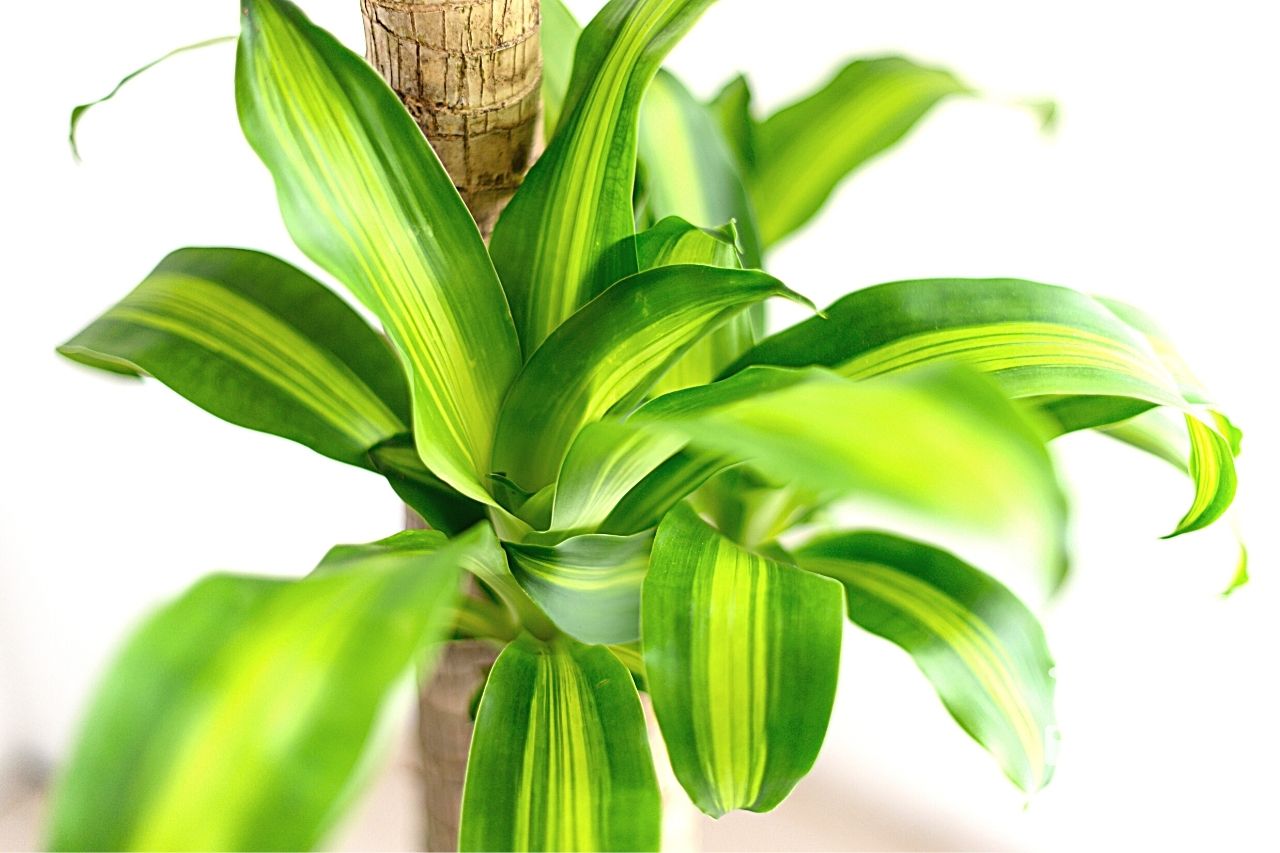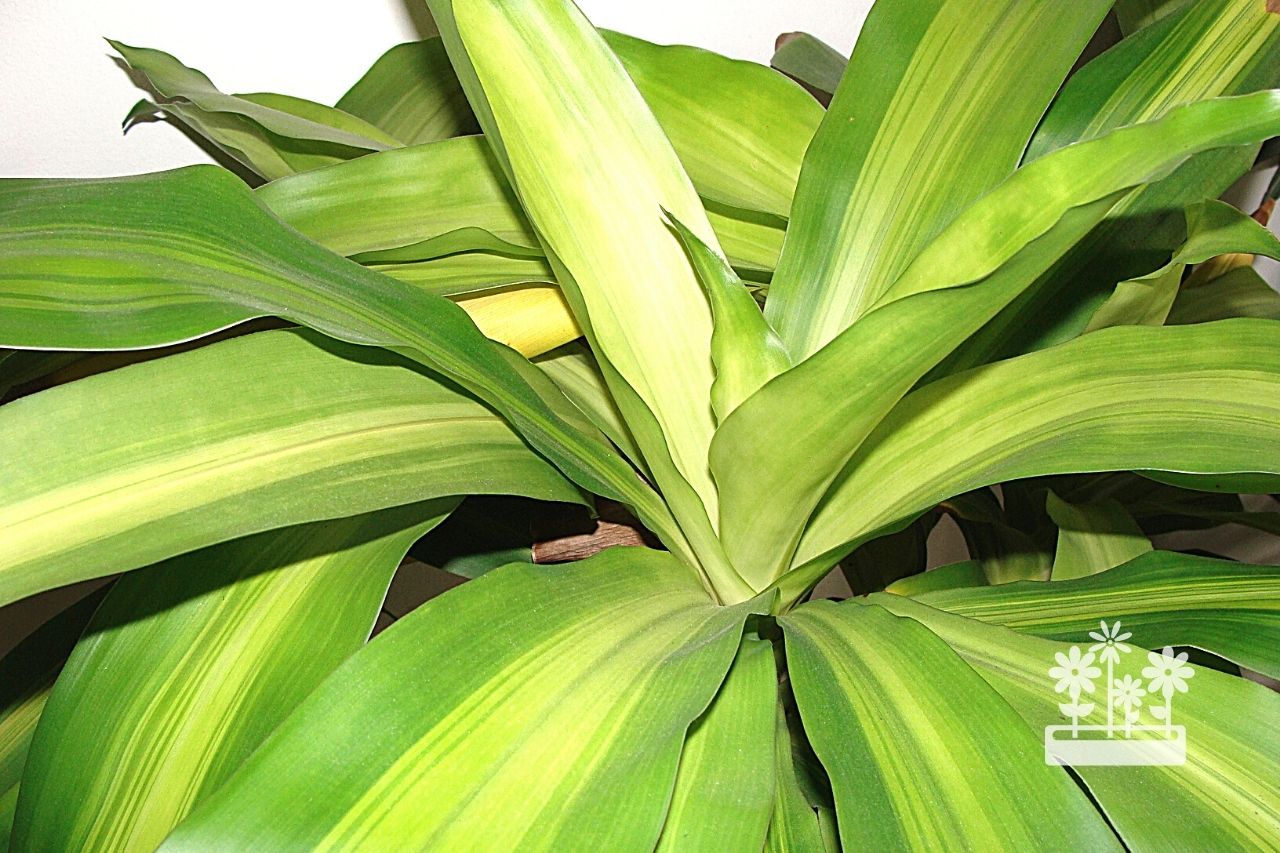Repotting a corn plant can seem like an intimidating task, especially when you’re a new plant owner or if it’s your first time repotting a dracaena. But fortunately, corn plants are not very fussy and will usually forgive you if you make a mistake. In this article, we’ll help you figure out whether your corn plant needs to be repotted and guide you through the process.
What You'll Learn Today
When Should You Repot a Corn Plant?

Repotting a houseplant can cause a lot of stress to the plant’s roots, so plant owners should be selective when deciding whether to repot a plant. Dracaenas don’t seem to mind repots as much as some other types of plants, but it’s always best to limit unnecessary stress to your plant.
Generally speaking, if your corn plant is growing well, seems healthy, and is not exhibiting apparent signs of distress, you should try to avoid repotting. Your dracaena will let you know when it’s time for a new home by showing one or more of these signs:
- Slowed growth: If you notice that your corn plant doesn’t seem to be growing or the growth rate has declined, be on the lookout for other signs of distress. If its current quarters aren’t allowing for enough space for the roots, corn plants usually slow their growth.
- Visible roots: If you can see roots emerging from the top of the soil or poking out of the bottom of the pot, it’s a sign that your plant is outgrowing its pot.
- Difficulty watering: If the plant’s roots are too big for its pot, you might notice that the soil dries out very quickly or that it isn’t absorbing the water. When you water, it might drain out of the pot immediately.
- Yellowing or browning leaves: It’s normal for older leaves on a corn plant to yellow, brown, and eventually drop. But if your plant is rapidly dropping leaves, it could be unhappy.
- Soil is too wet: If your soil stays wet for too long, there could be an issue with the soil type or the pot. Dracaenas need well-draining soil in an appropriately sized pot so that the roots don’t stay wet for too long.
It’s important to note that some of these signs, like soggy soil, damaged leaves, or slowed growth, can indicate other houseplant problems aside from outgrowing its pot. When you’re diagnosing a problem with your corn plant, try to look at the whole picture.
For example, if you notice that growth has slowed down, don’t rush to repot right away. If your plant is stressed for another reason, you might do more harm than good by repotting.
Many plant owners like to wait until there are multiple signs that their plant needs to be repotted. If your corn plant has a small root poking through a drainage hole but is otherwise is healthy and thriving, you may consider leaving it alone until growth slows or it becomes difficult to water adequately.
What Size Pot Does a Corn Plant Need?
Your corn plant’s pot should always be just slightly larger than the size of the root ball, with around 2 inches of space between the roots and the sides of the pot. This gives your plant’s roots enough room to spread out while keeping it snug in its pot, which corn plants enjoy.
If the pot is too big, the roots of your dracaena won’t be able to absorb the extra water it receives during watering, it will take too long to dry out, and the roots could rot and die. Oversized pots often lead to overwatering, a widespread cause of death in houseplants.
On the flip side, when your corn plant outgrows its pot, it will stop growing. You may also notice symptoms such as leaf drop, browning, yellowing, drooping leaves, and roots emerging from the bottom or top of the pot.
What Kind of Soil Does a Corn Plant Need?
When deciding on the appropriate soil for any houseplant, start by figuring out its watering needs. Plants who like their soil to be kept moist need a potting mix need a moisture-retaining blend, for example.
Corn plants appreciate moderately moist soil and need to be watered when only the top inch of soil is dry to the touch. They don’t do well sitting in soggy, waterlogged soil, however.
The ideal soil for a corn plant is a peat-based potting mix formulated for tropical houseplants. Peat helps to keep the soil relatively moist, while other ingredients in the mix, such as perlite, will allow it to drain.
How To Repot a Corn Plant?

Now that you know when to repot, how to figure out pot size, and appropriate soil for a Dracaena fragrans, let’s get down to business! Here’s what you’ll need:
- Potting soil
- Bowl
- Pot
- Garbage bin for the old soil
Step 1: Moisten the New Soil
It’s easier to plant something in slightly damp soil, so it’s a good idea to pre-moisten your new soil. Pour some of the potting mix into the bowl and water the soil sparingly – just until it’s no longer dry.
Step 2: Remove the Plant
You will need to tailor this step to the current condition of your plant. First, tip the pot on its side and gently tug on the stem. If it slides out readily, move on to the next step.
If you feel some resistance, try tapping on the bottom and sides of the pot to try and loosen it, and then tug the stem again. If your plant is in a plastic nursery pot, squeeze the sides of the pot to loosen the soil.
Be particularly careful if the roots are growing out of the bottom to avoid damaging them when you pull the plant out.
Step 3: Look at the Soil/Roots
If the soil around the plant’s rootball is poor quality or broken down, then carefully remove as much soil as you can from the roots without ripping or breaking any. If the roots are growing in a tight circle in the shape of the pot, then loosen some of the outer roots.
If the soil looks good and the plant is not root bound, you’re ready for the next step.
Step 4: Add New Soil
Now that you know the size of the root system, add some new soil to the bottom of the new pot. The top of the root ball should end up just under the container’s rim when you place the plant inside.
Make sure that the plant’s roots are threaded down into the soil and not scrunched up so that they can grow downward freely. Next, fill in the sides of the pot with new soil.
Step 5: Water Thoroughly
Give your plant a nice thorough watering until water comes out of the drainage hole. If some of the soil settles below where you placed it, you can add a little more to the pot.
If you’re a visual learner, check out this video that details the repotting process:
Trial and error is simply the name of the game with plant care! Although repotting your corn plant can seem scary at first, it will get easier, and you’ll get more efficient each time you do it.
And if things don’t go as planned, try not to sweat it. Plants want to live and often reward you if you’re patient.
My plant broke off from the top. The rest of the corn plant is dead. Help!
You can try to root the top of your Corn Plant in some fresh potting soil, or take a cutting and root it in water before planting it in soil. If the rest of the plant is dead then just try to salvage what you can!
My corn plant is has always been in my house. I live in Daytona Beach, FL, and would like to know if transplanting my plant is the same as a corn plant living outside. Do I have to use worm soil? I have compost with manure that I use in my garden. Will that be okay? I’ve grown my corn plant from about a 2-3 foot (a few years ago) to now a 5 foot. It’s still in the same small pot in came in. I want to be sure I repot it right since this is the first time.
Thank you!
Your corn plant will definitely appreciate a new pot if it has grown from 3ft to 5ft! Good, rich, well draining soil is essential – you can use your garden compost, and consider adding some coarse sand or gravel to improve the drainage. Good luck!
I think my corn plant is the Rick. I received it five months ago at my father-in-laws funeral. It’s beautiful with light green foliage top to bottom and about 5’ tall. my question is can I separate it into three pots? It looks like the florist crammed three plants into one pot. It has grown at least a foot taller in five months and is 4’ wide, making it difficult to find a spot large enough in the house.
You can separate your plant, but you run a serious risk of damaging the roots and losing the whole plant. Best to take a few cuttings before you try, so you’ll still have your original mother plant.
I have my corn plant indoors and was given to us for my sister-in-law’s funeral to my husband and I. It was doing really well, until we put it outside and let rainwater fall on it; didn’t realize that all the rainwater stayed inside the pot it came it (as you can see, I’m not that good at taking care of plants). Once I realized all the water, was still in the pot after a few days (leaves were turning brown). I immediately took the excess water out. However, I haven’t watered it I still have brown parts on the leaves and I’m wondering if it’s salvageable. I really want it or should I separate them into 3 pots?
Melissa, it’s heartbreaking when our favorite plants get damaged isn’t it! It sounds like you did everything right to save your corn plant – I would absolutely not water it any more until the soil is dry. Also, the brown parts on those leaves are already dead, so you should remove them to allow the plant to put its energies elsewhere. Repotting it now may add more stress to the plant, so leave it where it is and keep a close eye on it. Let me know if I can help with it any further!